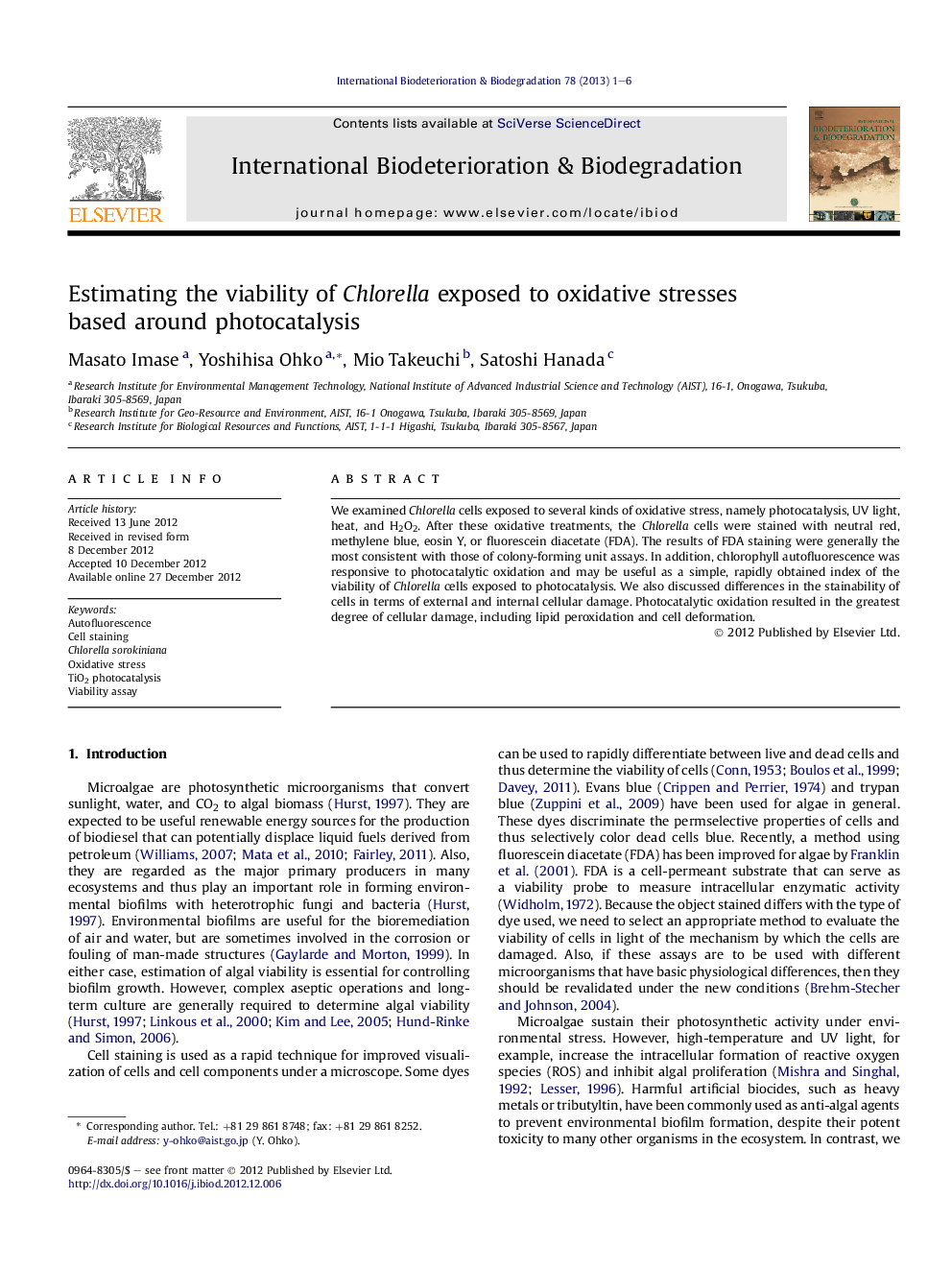| Article ID | Journal | Published Year | Pages | File Type |
|---|---|---|---|---|
| 4365093 | International Biodeterioration & Biodegradation | 2013 | 6 Pages |
We examined Chlorella cells exposed to several kinds of oxidative stress, namely photocatalysis, UV light, heat, and H2O2. After these oxidative treatments, the Chlorella cells were stained with neutral red, methylene blue, eosin Y, or fluorescein diacetate (FDA). The results of FDA staining were generally the most consistent with those of colony-forming unit assays. In addition, chlorophyll autofluorescence was responsive to photocatalytic oxidation and may be useful as a simple, rapidly obtained index of the viability of Chlorella cells exposed to photocatalysis. We also discussed differences in the stainability of cells in terms of external and internal cellular damage. Photocatalytic oxidation resulted in the greatest degree of cellular damage, including lipid peroxidation and cell deformation.
► Chlorella cells exposed to several kinds of oxidative stresses were investigated. ► Several facile methods were tested to estimate cell viabilities. ► FDA staining generally gave the most consistent results with those of CFU assays. ► Chlorophyll autofluorescence was responsive to photocatalytic oxidation. ► Lipid peroxidation and cell deformation occurred by photocatalytic oxidation.
